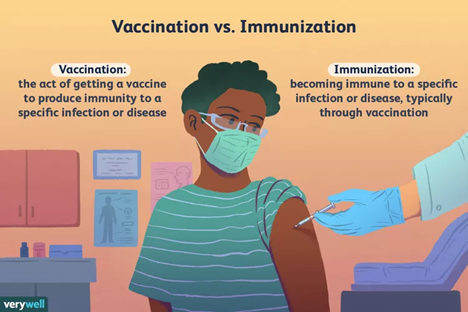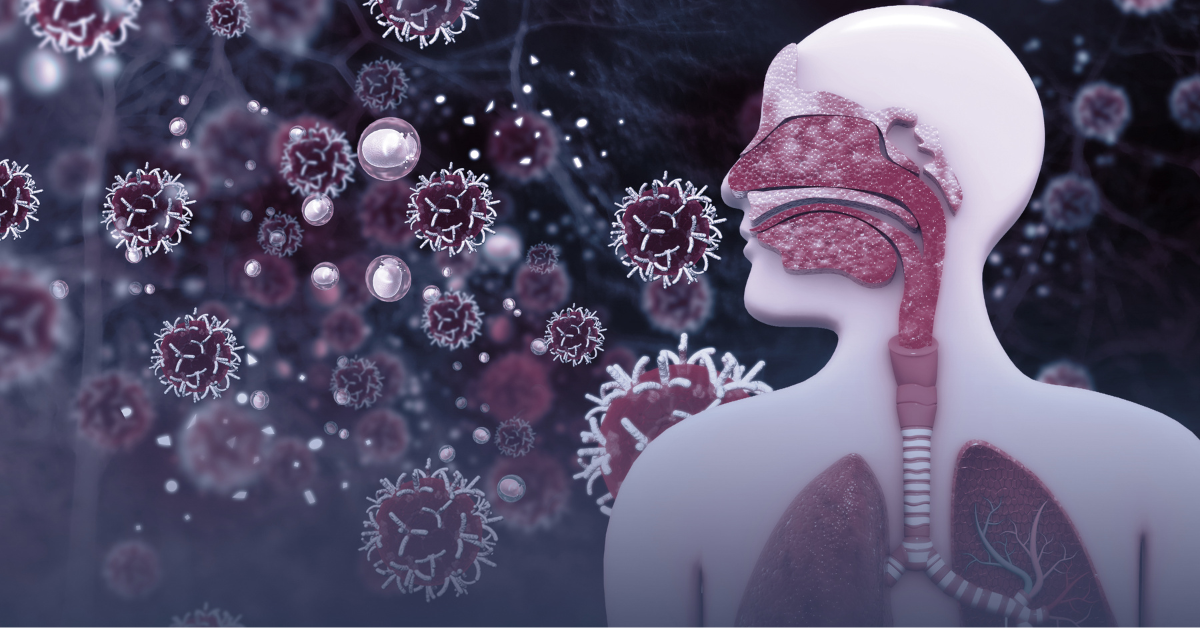The Role of Immunization and Vaccines in Protecting Wisconsin Communities from Respiratory Viruses
October 20, 2023 Posted by AHW Endowment

To explore more Coffee Conversations with Scientists episodes, click here.
Immunization and vaccines offer protection against various modern diseases, playing an important role in public health. The rise in seasonal respiratory infections, from the common cold to more severe threats like COVID-19, Respiratory Syncytial Virus (RSV), and influenza (flu), underscores the need for effective preventive measures. At this time of year, healthcare providers are encouraging patients and their communities to get their flu shots and COVID-19 boosters, and for some, an RSV vaccine.
But why are these recommendations so important, and why do healthcare providers urge people to get their vaccines?
In a recent episode of Coffee Conversations with Scientists, Carlos Figueroa Castro, MD, assistant professor of infectious disease at the Medical College of Wisconsin, discussed the importance of immunizations, early detection, and infection prevention.
What Are Immunizations and Vaccinations?
Immunization and vaccination are terms often used interchangeably. However, they do not mean the same thing: Vaccination refers to administering a vaccine, while immunization is the result of receiving a vaccine and developing immunity against a specific disease. Immunization is the protection that vaccination aims to achieve, helping an individual's immune system recognize and protect the body from future exposures to a disease-causing pathogen.

Image courtesy of verywellhealth.com
Immunization is known to be one of the most effective tools in public health. The world’s first successful vaccine, for protection against smallpox, was introduced in 1796 by Dr. Edward Jenner. However, people from around the world have been attempting to prevent illness by intentionally exposing healthy people to disease from at least the 15th century, with some sources suggesting this practice began as early as 200 BCE.
In the centuries since Dr. Jenner introduced the smallpox vaccine, we’ve seen the successful development of vaccines against a variety of infectious diseases, such as polio, measles, influenza, and most recently, COVID-19.
Passive Immunity and Antiviral Treatments
While vaccines have been developed to address many of the world’s most serious diseases, there are cases in which a vaccine is not available for certain conditions. As Dr. Figueroa Castro explained, in these scenarios, administering passive immunity can be an option, giving the patient the antibodies specific to the infectious agent the body needs protection from.
One such instance of administering passive immunity is the use of antivirals for severe COVID-19 infections. “For example, with COVID-19, there were monoclonal antibodies—molecules that can detect a specific trait in the surface of the virus that helps tell the body, ‘Look, this doesn’t belong here….’ You’re given the antibodies (with an antiviral treatment) that your body would form on its own (with a vaccine),” said Dr. Figueroa Castro.
Why Are Vaccines and Boosters Important?
Vaccines and boosters are crucial to protecting communities against spreading infections. Take influenza, for example. Our public health system closely monitors the strains and variants of influenza that are circulating in the community, which informs what goes into seasonal influenza vaccine formulations.
As Dr. Figueroa Castro said, “When we talk about the flu vaccine, you’re getting different compounds that cover different strains, and that combination is driven by what’s circulating in the community. Every year, then, when it’s the time to decide what goes into that vaccine, it’s been determined what’s the most common virus in the community. That’s how they concoct it.”
A similar process is used to develop updates and boosters for COVID-19 vaccines, using data and information collected through community monitoring to determine vaccine compositions.
The Tripledemic: Immunization and Prevention
Immunizations are an especially important topic when there is a surge in the spread of certain viruses and diseases. The simultaneous increase in COVID-19, RSV, and influenza cases has become known as a tripledemic, with a growing presence and spread of all three respiratory viruses. Getting the seasonal and recommended vaccinations against these common illnesses is an important step to reducing their spread and impact.

The Rise of the Tripledemic
Why are these three respiratory viruses surging at the same time? According to Dr. Figueroa Castro, the introduction of safety precautions implemented to protect communities from spreading COVID-19, such as wearing masks and social distancing, was also effective at reducing the spread of other respiratory infections.
“When those measures were phased out, we saw an upsurge in classic respiratory infections, a conjunction of having COVID-19, RSV, and influenza. That’s where this tripledemic concept comes from. We obviously have more respiratory viruses out there, but these three are the most important for us because they can cause severe disease.”
As Dr. Figueroa Castro comments, it can be difficult to clinically distinguish if an infection is related to COVID-19, RSV, or influenza. However, it’s important to see a medical professional to determine what care is needed.
“There are some symptoms that are common with certain infections. Many people are aware that patients with COVID-19 experience problems with sense of taste or smell, which we don’t see as much with other infections. That’s why we are pushing to tell patients that, if they have respiratory infections that seem to be more than the common cold, it’s important to be diagnosed correctly because some of those infections we have antiviral therapies we can start, and the sooner we start the treatment, the better.”
Protecting Yourself from Infection
With multiple respiratory viruses circulating our communities this fall and winter, how can individuals protect themselves from infection?
Dr. Figueroa Castro suggests the following steps:
- Getting the recommended vaccinations for COVID-19, influenza, and RSV (for adults 60 and older)
- Practicing good handwashing habits and covering your coughs and sneezes appropriately
- Wearing a mask, especially if you’re at a higher risk for infection
In addition to these steps, Dr. Figueroa Castro mentioned that it’s helpful to pay attention to current data and information available regarding the status and spread of viruses in our communities. Wisconsin Department of Health Services, for example, is an excellent and timely resource for tracking the spread of influenza and COVID-19 in Wisconsin communities.
Testing for Respiratory Virus Infections
For individuals experiencing respiratory illness symptoms, COVID-19 and influenza home tests are helpful to identify—or rule out—a more serious respiratory infection and guide care and treatment.
Individuals can order free at-home COVID-19 tests from COVID.gov, while several combined influenza and COVID-19 molecular home tests are now available online. Individuals can also undergo rapid on-site testing for COVID-19 and Influenza A/B at pharmacies such as CVS and Walgreens. While there aren’t currently at-home RSV tests available for consumers, healthcare providers can administer these tests.
Learn More About Immunizations and Infection Prevention
Watch the replay of Dr. Figueroa Castro’s episode of Coffee Conversations with Scientists to hear more about immunizations and vaccinations and how to prevent and reduce the risk of infection:



